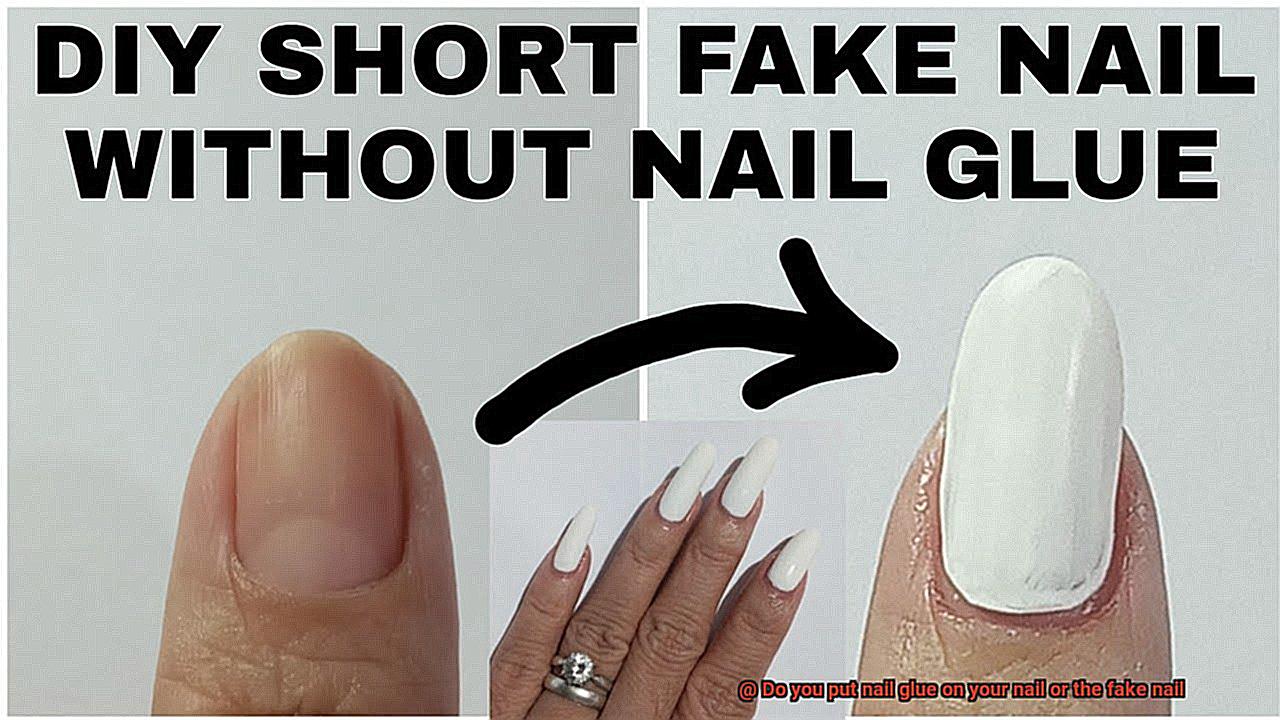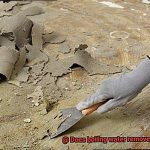From classic French manicures to dazzling bedazzled designs, nail glue is the secret ingredient that holds it all together. But here’s the burning question: Do you apply nail glue on your natural nail or the fake one? Join me as we uncover the truth behind this age-old debate.
Imagine this: you’re gazing at a fresh set of jaw-dropping nail enhancements, pondering where exactly that magical glue should go. In moments like these, clarity is key because nailing the right technique can make or break your journey into nail art nirvana.
So, where does the elusive nail glue truly belong? The answer lies in understanding its science. Nail glue, a powerful adhesive agent, is designed to bond two surfaces together. However, it’s vital to remember that your natural nails are off-limits for this sticky substance. Why? Because using nail glue directly on your nails can lead to damage and weaken them over time.
Therefore, proper application involves placing a small dot of glue onto the artificial nail instead. This ensures a secure and steadfast attachment while safeguarding your precious natural nails from harm’s way. By following this approach, you can revel in a seamless and breathtaking journey through the realm of exquisite nail art without compromising your nails’ well-being.
In this article, we’ll dig deeper into why this technique is essential, debunk common myths surrounding it, and explore alternative adhesive options for all you fellow nail enthusiasts out there. So stick around and get ready to unlock the secrets to flawlessly glued-on nails.
What is Nail Glue?
Contents
- 1 What is Nail Glue?
- 2 How to Apply Nail Glue Properly
- 3 Benefits of Applying Nail Glue on the Fake Nail
- 4 Potential Risks of Applying Nail Glue Directly on Natural Nails
- 5 Tips for Applying and Removing Fake Nails with Nail Glue
- 6 Recommended Tools for Applying and Removing Fake Nails with Nail Glue
- 7 Maintenance Tips for Healthy Natural Nails After Removal of Fake Nails
- 8 When to Consult a Professional for Application and Removal of Fake Nails with Nail Glue
- 9 Conclusion
Look no further, because nail glue is here to revolutionize your nail art journey. Join us as we delve into the captivating world of nail glue, exploring its purpose, application techniques, and expert tips for achieving jaw-dropping results. Prepare to unlock the power of nail glue and take your nails to new heights.
The Essence of Nail Glue:
- Nail glue is a specialized adhesive meticulously crafted for attaching artificial nails or extensions to your natural nails.
- Available in various forms such as liquid, gel, and brush-on formulas, nail glue offers versatility to cater to different preferences and needs.
- At the heart of nail glue lies cyanoacrylate, an extraordinary ingredient that dries rapidly and forms an unyielding bond upon contact with moisture.
Mastering the Art of Application:
- Begin by preparing your natural nails, ensuring they are free from any remnants of polish or residue.
- Employ a delicate touch with a cuticle stick or orangewood stick to gently push back your cuticles, creating a clean canvas for flawless application.
- To enhance adhesion, lightly buff the surface of your nails, introducing a textured foundation that facilitates impeccable bonding.
- Apply a modest amount of nail glue onto the natural nail bed, cautiously avoiding contact with the cuticles and surrounding skin.
- Embrace perfection as you press the artificial nail onto the glue-coated natural nail, allowing a few seconds for the bond to solidify.
Do’s and Don’ts for Sensational Results:
- Do exercise restraint when applying nail glue to avoid excessive usage that may compromise the integrity of your nails.
- Do concentrate the application on your natural nails rather than the artificial ones, ensuring a steadfast and enduring connection.
- Do exercise caution to prevent any glue from coming into contact with your skin or cuticles, averting discomfort or allergic reactions.
- Don’t overlook the importance of proper nail bed preparation, as applying nail glue directly onto unprepared nails can lead to damage and weakened structures.
- Don’t forget to meticulously remove any excess glue that seeps out from the sides of the artificial nail using a cotton swab dipped in acetone.
How to Apply Nail Glue Properly
Fake nails can provide the strength and durability you desire, but only if you apply the nail glue properly. In this blog post, we will guide you through the step-by-step process of achieving a flawless manicure that lasts. Get ready to master the art of applying nail glue and enjoy beautiful nails for weeks.
Prep Your Nails:
Before diving into the gluing process, it’s crucial to prepare your nails. Start by removing any traces of old polish or dirt using a gentle nail polish remover. Then, shape your nails to your desired length and gently buff the surface to create a slightly rough texture. This will help the glue adhere better and ensure a strong bond.
Choose the Perfect Glue:
There are various types of nail glues available, so choose one that suits your preferences and skill level. Brush-on glue provides more control during application, while glue with a nozzle allows for precise placement. Consider your needs and select the glue that feels most comfortable for you.
Apply with Precision:
When it comes to applying nail glue, remember that less is more. Begin by applying a small amount either onto the fake nail or directly onto your natural nail. For better control and to avoid any mess on your skin, it’s recommended to apply the glue onto the fake nail instead. Make sure not to go overboard with the glue, as excess can lead to an untidy application.
Press and Hold Firmly:
Once the glue is applied, gently press the fake nail onto your natural nail, starting from the cuticle area and moving towards the tip. Hold it in place for about 10-15 seconds to allow the glue to bond effectively. This step is crucial for achieving a secure and long-lasting attachment.
The Finishing Touch:
After applying all the fake nails, give them ample time to dry and set. This typically takes around 5-10 minutes, but check the instructions on your specific nail glue. During this time, avoid any contact with water or activities that may put pressure on your nails.
Benefits of Applying Nail Glue on the Fake Nail
If so, it’s time to master the art of applying nail glue. Not only will this simple technique give you a flawless and long-lasting manicure, but it also offers a multitude of benefits. Say goodbye to chipped and brittle nails and hello to a fabulous look that stands the test of time.
Firstly, nail glue provides a strong and durable bond between the fake nail and your natural nail. This superhero-like adhesive ensures that your fake nails stay in place, even if you lead an active lifestyle. No more worrying about nails breaking or chipping easily—nail glue reinforces their strength and longevity.
But that’s not all. Nail glue also prevents lifting, which occurs when the fake nail starts to separate from your natural nail, leaving an unsightly gap that can trap dirt and bacteria. By using nail glue, you can minimize the risk of lifting and keep your nails looking neat and clean at all times.
If you have weak or brittle nails, fear not. Nail glue acts as a support system, providing added stability to your fake nails. Say goodbye to wobbling or excessive movement—nail glue protects and strengthens your nails, giving them the stability they need.
One of the most convenient aspects of using nail glue on fake nails is its easy removal process. Unlike traditional methods like acrylic nails that require filing or soaking in acetone, fake nails attached with glue can be easily taken off by soaking them in warm soapy water. This makes it a breeze for those who love changing their nail designs frequently, allowing for hassle-free removal whenever desired.
Last but certainly not least, applying nail glue on fake nails creates a smoother and more natural-looking finish. No more fretting over uneven surfaces or gaps between your natural and fake nails. The glue fills in any imperfections, resulting in a seamless appearance that is both polished and professional.
Potential Risks of Applying Nail Glue Directly on Natural Nails
In our previous section, we discovered the magical powers of nail glue and its ability to elevate your manicure game. But just like any superhero, even nail glue has its vulnerabilities. Today, we embark on a journey to uncover the potential risks of applying nail glue directly to natural nails. So, grab a cup of tea and brace yourself as we unravel the hidden dangers.
Fragile and Brittle Nail Beds:
Similar to a superhero facing a formidable foe, excessive or improper application of nail glue weakens and renders your natural nail bed brittle. The unyielding grip of the glue inflicts long-term damage, leaving you with nails that are prone to breakage and peeling.
Skin Irritation and Allergic Reactions:
Even superheroes have delicate skin. The chemicals lurking within nail glue can be harsh and irritating when they come into contact with the skin surrounding your nails. Prepare for an unwelcome surprise of redness, swelling, and potentially allergic reactions. Remember, everyone’s skin possesses its own unique defense system, making what works for one person a potential threat for another.
Stubborn Removal:
Ever tried vanquishing stubborn glitter nail polish? Well, removing nail glue can be just as challenging. Its unyielding adhesion makes it an arduous task to remove without inflicting damage upon the nail surface. Engaging in an intense battle of scrubbing or scraping off the glue can result in thinning or even peeling of your natural nails – definitely not the desired outcome for any aspiring superhero.
Stifling Nail Growth:
Nail growth is akin to a superpower for our nails, but applying nail glue directly onto them can impede this extraordinary process. The glue acts as a barrier between the nail and its natural environment, obstructing the flow of essential nutrients and moisture to the nail bed. Over time, this hindrance culminates in weakened and unhealthy nails – far from the strong and resilient nails we seek to possess.
Tips for Applying and Removing Fake Nails with Nail Glue
Fake nails, also known as nail extensions or press-on nails, are a fantastic way to achieve beautiful, salon-worthy manicures. However, it’s crucial to understand the best practices for applying and removing fake nails with nail glue. In this comprehensive guide, we will provide you with expert tips to ensure a flawless application while keeping your natural nails in top condition.
Prepare Your Canvas: Cleanliness is Key
Before applying fake nails, it’s essential to start with a clean and dry canvas. Begin by removing any remnants of old nail polish using a gentle nail polish remover. This step ensures that the nail glue adheres properly to your natural nails. Additionally, wash your hands thoroughly to eliminate any dirt or oil that may interfere with the glue’s adhesion.
Trim and Shape: The Foundation for Success
To create a smooth surface for the fake nails, trim and shape your natural nails before application. This step not only enhances the overall appearance but also helps prevent the fake nails from lifting or popping off prematurely. Take your time to achieve even lengths and smooth edges – trust us, it’s worth the effort.
Glue Application: Precision is Key
When it comes to applying nail glue, precision is vital. Start by applying a thin layer of glue directly onto your natural nail. You can use the brush applicator that comes with the glue or a small disposable brush for more control. Be careful not to let the glue come into contact with your skin or cuticles – we want flawless nails, not sticky fingers.
Press and Hold: The Secret to Long-Lasting Nails
Once you’ve applied the glue, it’s time to carefully place the fake nail onto your natural nail. Begin at the cuticle area and press down gently but firmly. Hold the nail in place for a few seconds to allow the glue to bond properly. This step guarantees a secure and long-lasting hold, so you can confidently flaunt your fabulous nails.
Removal Process: Gentle is the Way to Go
When it’s time to bid farewell to your fake nails, it’s crucial to remove them gently and without causing any damage to your natural nails. Start by soaking your nails in warm soapy water for approximately 10-15 minutes. This gentle soaking helps loosen the glue, making it easier to remove the fake nails.
Gentle Removal: Patience is a Virtue
After soaking, use a cuticle pusher or an orangewood stick to gently lift the edges of the fake nails. Avoid forcing or prying them off forcefully, as this can lead to damage and weaken your natural nails. If you encounter any resistance, soak them for a few more minutes and try again – patience is key.
Recommended Tools for Applying and Removing Fake Nails with Nail Glue
Achieving flawless and long-lasting fake nails requires precision and the right tools. In this guide, we will explore the essential tools needed for applying and removing fake nails with nail glue. These tools not only make the process easier but also ensure a professional-looking result. Let’s dive in and discover the key tools you need.
Nail File: Shape and Smooth

To create a strong bond between your natural and fake nails, start with a nail file. This essential tool shapes and smooths your natural nails, providing a perfect surface for the glue to adhere to. Invest in a high-quality file that gently shapes without causing damage.
Cuticle Pusher or Orangewood Stick: Create Space and Remove Excess
Gently push back your cuticles using a cuticle pusher or orangewood stick. This step creates more space for the fake nails to be applied while ensuring a neat and professional look. Additionally, this tool helps in removing any excess glue that may seep out during application.
Nail Glue: Strong Bonding
Selecting the right nail glue is crucial for successful application of fake nails. Opt for a high-quality glue specifically designed for this purpose. Look for features like quick drying, strong bonding, and ease of application. Precision applicators in small bottles allow you to control the amount of glue used.
Tweezers or Nail Clippers: Precise Placement and Shaping
Tweezers or nail clippers are handy tools for applying and removing fake nails. Use tweezers to hold and position the fake nails accurately while applying glue. Nail clippers help trim and shape the fake nails to your desired length and shape, giving you full control over your nail style.
Acetone: Easy Removal
When it’s time to remove your fake nails, acetone becomes your best friend. This powerful solvent breaks down the bond between your natural and fake nails, making removal a breeze. Make sure to use pure acetone, as nail polish removers often contain additives that can be harsh on your natural nails.
Small Bowl or Container: Soaking Solution
Prepare a small bowl or container filled with acetone for soaking your fake nails. Soak for 10-15 minutes to allow the acetone to penetrate and loosen the glue. This gentle soaking method ensures a smooth removal process without damaging your natural nails.
Maintenance Tips for Healthy Natural Nails After Removal of Fake Nails
If you’ve recently bid farewell to your fake nails and want to ensure the health and strength of your natural nails, you’re in the right place. Caring for your nails after removing fake nails is essential for their recovery and overall well-being. In this article, we’ll share essential tips to help you maintain beautiful natural nails. Let’s dive in.
Allow Your Nails to Breathe and Recover:
After removing fake nails, it’s crucial to give your natural nails a well-deserved break. Resist the temptation to apply new treatments or products immediately. Instead, let your nails breathe and recover by keeping them clean and dry. Avoid prolonged exposure to water, as it can weaken the nails and make them more susceptible to breakage.
Nourish and Moisturize Regularly:
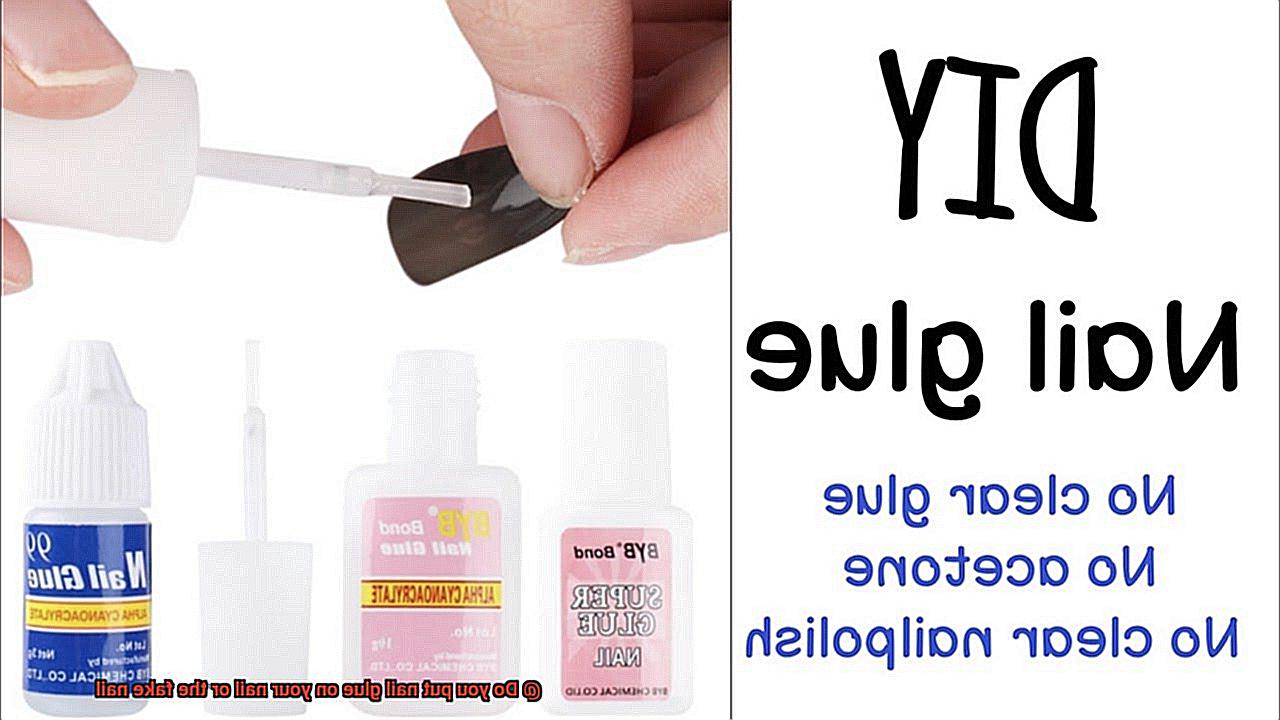
To maintain healthy natural nails, regular nourishment and moisture are key. Pamper your nails and cuticles with high-quality nail and cuticle oil or cream. These products will hydrate your nails, preventing dryness and brittleness. Gently massage the oil or cream into your nail beds, ensuring maximum nourishment.
Trim and Shape with Care:
Keeping your nails at an appropriate length is crucial in preventing breakage. Regularly trim your nails using a reliable nail clipper or file. Shape them according to your preference, but be cautious when filing to avoid damaging the nail surface. Opt for a gentle file instead of harsh metal files.
Say Goodbye to Harsh Chemicals:
Steer clear of harsh chemicals on your nails, especially acetone-based nail polish removers. These removers strip away the natural oils from your nails, leaving them dry and brittle. Opt for non-acetone polish removers or experiment with gentle alternatives like lemon juice or vinegar.
Shield Your Nails:
Protecting your nails from damage is paramount to maintaining their health. Wear gloves when engaging in household chores or activities that expose your nails to harsh chemicals or excessive moisture. This simple step will shield your nails from becoming weak and brittle.
Adopt a Healthy Lifestyle:
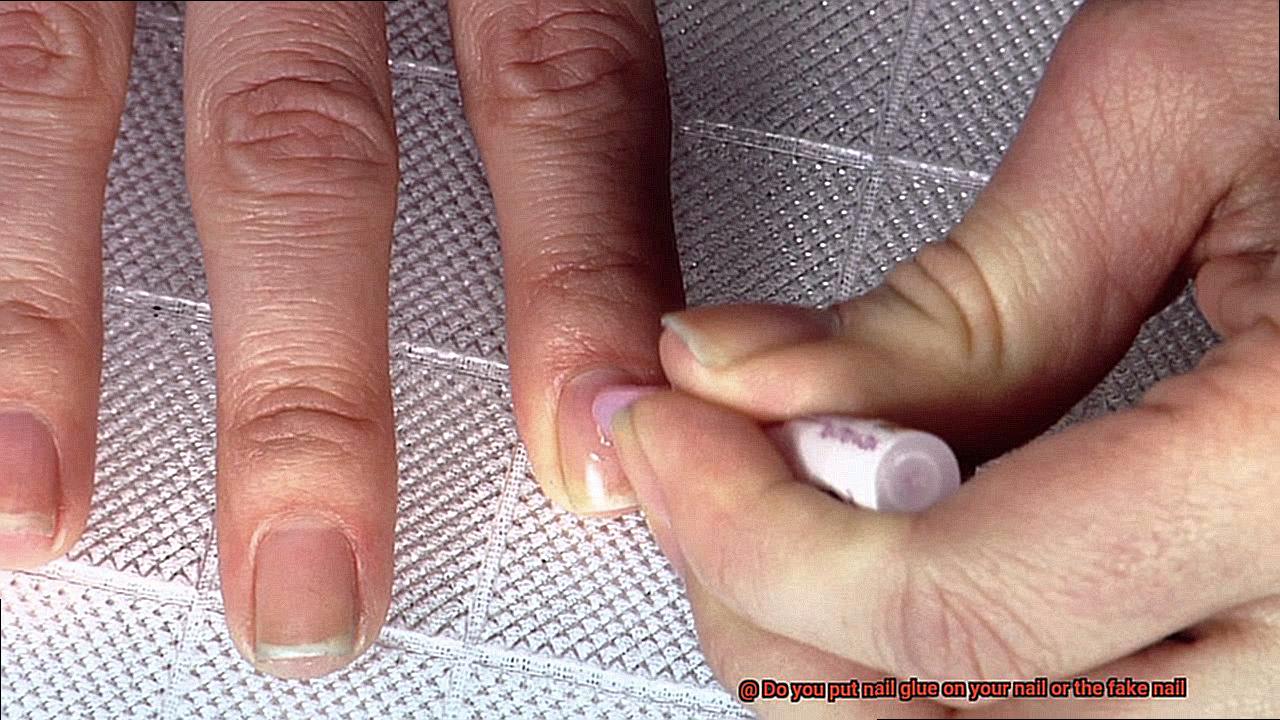
Embracing a healthy lifestyle is vital for strong and beautiful natural nails. Ensure your diet includes foods rich in vitamins and minerals such as biotin, vitamin E, and calcium, as these promote nail health. Additionally, avoid habits like nail biting or picking, as they can cause damage and weaken the nails.
When to Consult a Professional for Application and Removal of Fake Nails with Nail Glue
From adding a touch of glamour to enhancing your everyday look, fake nails can be a game-changer. But before you take out that nail glue and start sticking, it’s important to know when it’s time to call in the professionals. In this expert guide, we’ll explore when it’s essential to consult a professional for the application and removal of fake nails with nail glue. So, let’s dive in.
Newbies and Uncertain Nail Enthusiasts:
If you’re new to the world of fake nails or unsure about the application process, seeking professional help is a wise choice. Professionals have the expertise and experience to ensure your nails are applied correctly and securely. They’ll guide you through the process, recommend suitable nail types, and choose the right nail glue for your specific needs.
Existing Nail Conditions or Infections:
Do you have any existing nail conditions or infections? It’s crucial to consult a professional before diving into the realm of fake nails. They’ll assess your nails’ condition and determine if it’s safe to proceed with the application. This step is essential as applying fake nails over damaged or infected nails can worsen the condition and delay healing.
Safe Removal Techniques:
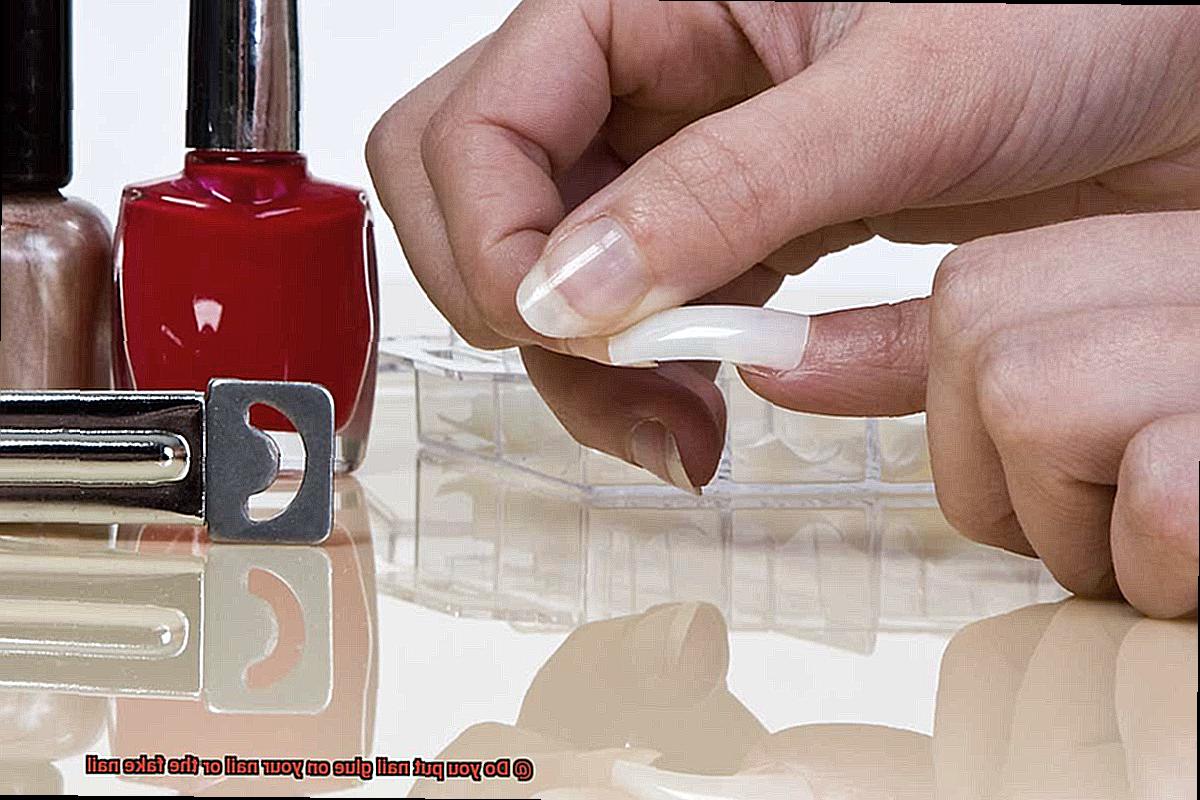
When it comes to removing fake nails, it’s generally recommended to have them professionally removed. Professionals possess the necessary tools and techniques to safely remove the nails without causing damage to your natural ones. Attempting DIY removal can lead to painful experiences, nail damage, or even infections if not done properly.
Discomfort or Pain:
During the application or removal process, if you experience any discomfort or pain, don’t hesitate to consult a professional. They’ll assess the situation and provide appropriate solutions or recommendations. Your comfort and nail health should always be a priority, so seek professional assistance when needed.
Nail Care and Maintenance:
Consulting a professional isn’t limited to the application and removal process. They can also offer guidance on proper nail care and maintenance after removing fake nails. They’ll advise you on how to restore and strengthen your natural nails, as well as recommend suitable products for nail health. This knowledge is invaluable for maintaining strong and beautiful nails.
Conclusion
When it comes to applying nail glue, it’s important to know where it should go – on your natural nail or the fake nail itself. The answer is simple: you put the nail glue on the fake nail, not your natural one. This ensures a secure and long-lasting bond between the fake nail and your real one.
By applying the glue directly onto the fake nail, you can control the amount and placement more effectively. It allows for an even distribution of adhesive, preventing any gaps or unevenness that could lead to lifting or breakage.
Remember, using too much glue can be just as problematic as using too little. A thin, even layer is all you need to create a strong bond that will withstand daily activities and regular wear.
So, next time you’re ready to apply those fabulous fake nails, remember to apply the glue onto them, not your natural ones.

